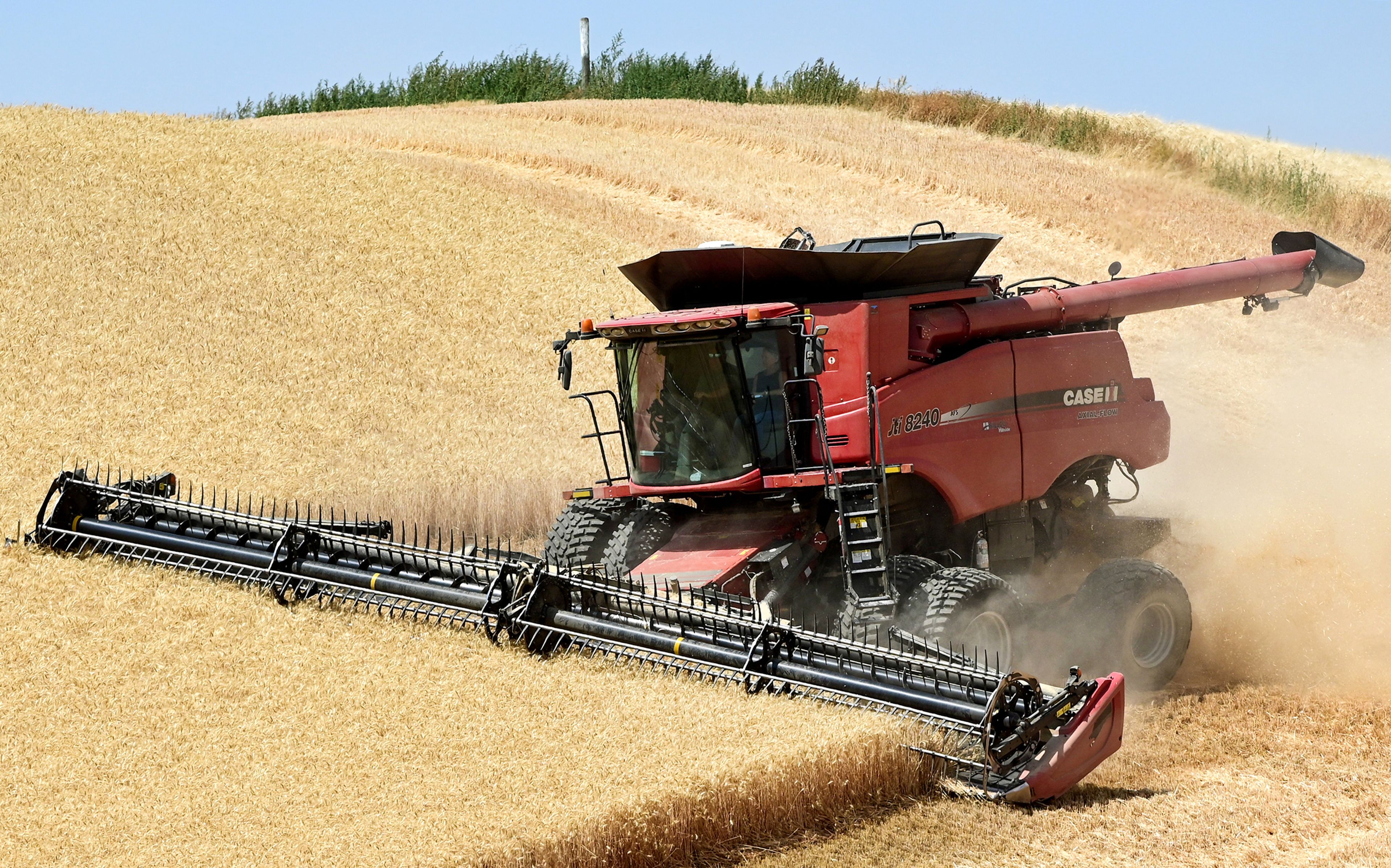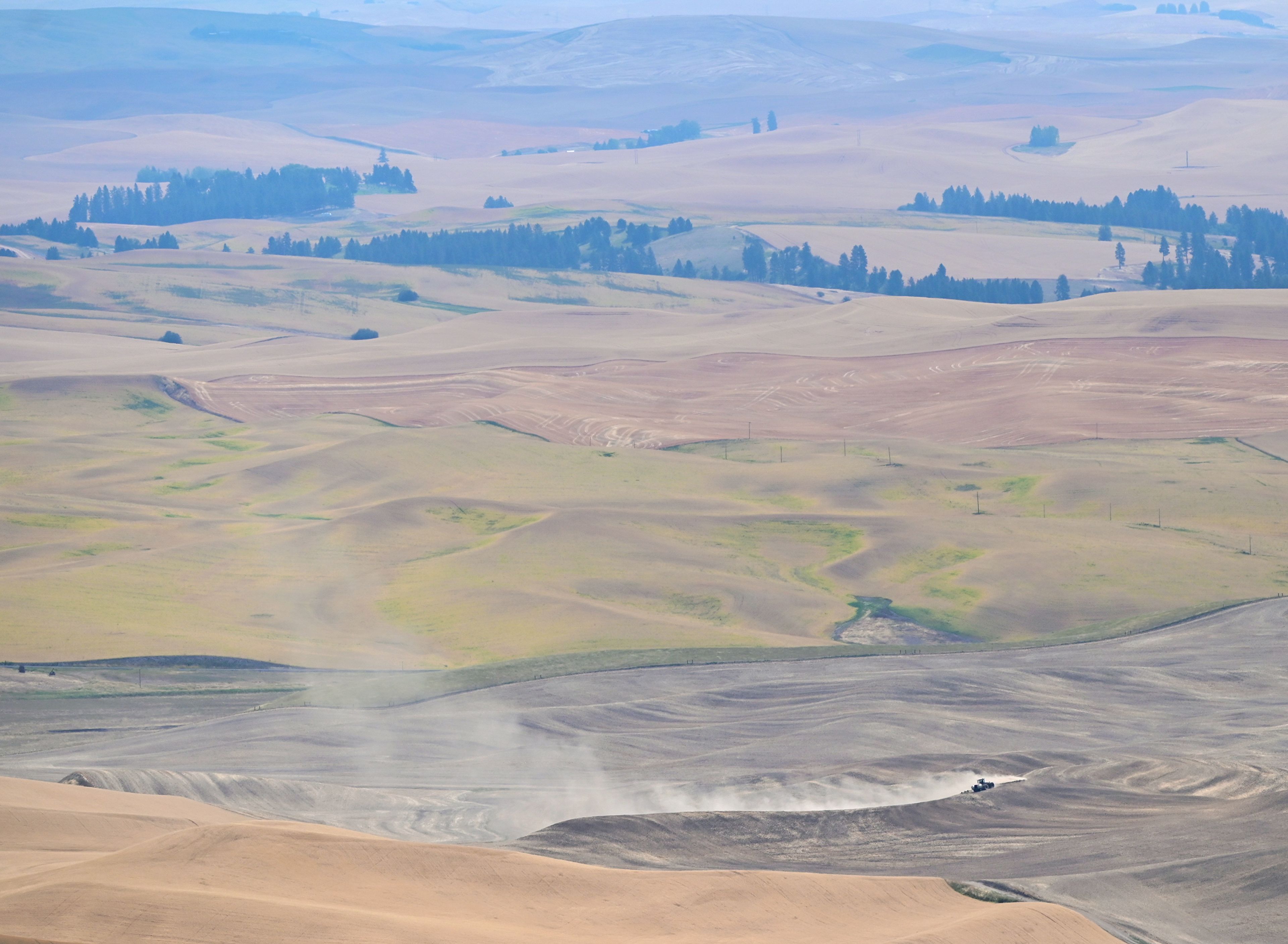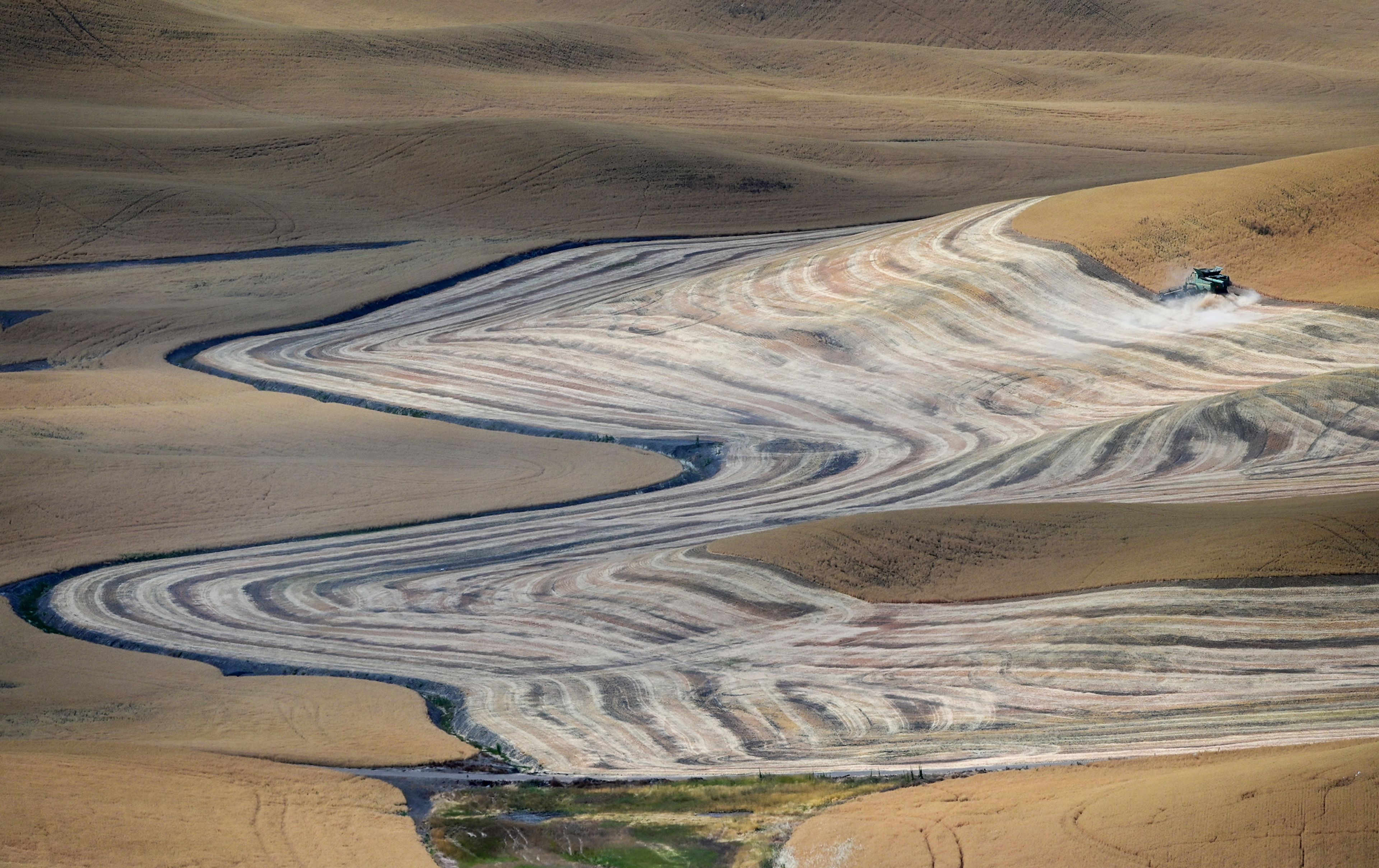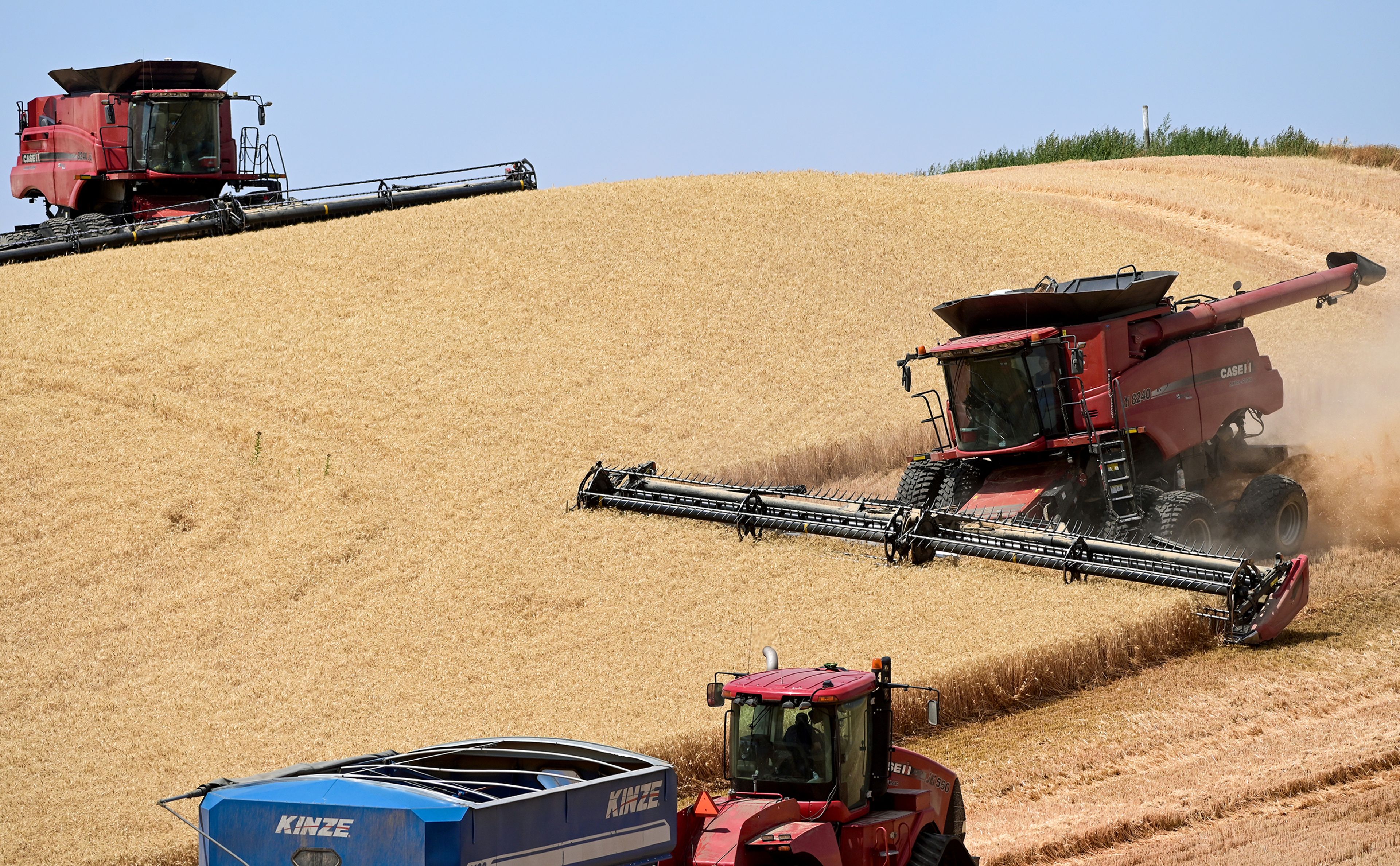Strong harvest, weak prices
Farmers in the region grew a good crop of winter wheat this year, but prices have been disappointing; lentils are looking lucrative
Palouse-area farmer Ben Barstow was part way through harvesting his spring barley crop this week when he was forced to take a break to deal with technical issues.
“I should be finishing in a day or so but I’m trying to see what that funny noise is in my combine,” Barstow said.
Mechanical problems aside, the barley crop “is surprising me,” Barstow added. “It’s doing better than average and considering the hot weather I think it’s done pretty well.”
Farmers around the region are nearing the end of the harvest season, although, as Barstow pointed out, people are in different places in their yearly schedule.
“It’s weird this year,” he said. “There’s still quite a bit of winter wheat out that hasn’t been touched yet. People are figuring, the prices are so poor, why rush? I’ve also talked to people that have started garbanzo (harvest), too.”
Barstow also said he’s had a lot of problems battling weeds in his crops this year.
Garbanzos, also known as chickpeas, are usually among the last crops to be harvested in this area. This year, garbanzos are among the few products actually fetching decent prices.
U.S. Wheat Associates reported late last week that the grain market is dismal for all classes of wheat across the country because of remaining stocks from last year and an oversupply of wheat production worldwide.
Traders indicated that farmers are reluctant to sell at the current prices and, as the soft white wheat harvest continues, discounts may emerge for wheat with lower protein content. As of Aug. 11, the association reported, only 7% of the winter wheat was left to harvest in Montana and the Pacific Northwest.
“There’s a lot of wheat in the world right now and buyers are not nervous about having enough to buy, especially in the U.S. ... Right now you can buy quality (wheat) really cheap,” Barstow said.
The Pacific Northwest Farmers Cooperative reported this week that soft white wheat, the most common variety raised in this area, was selling for less than $6 a bushel — less than what many farmers consider a break-even mark and about $5 less than a year ago. Barley fetches about $150 a hundredweight while lentils and garbanzo beans are selling between $35 and $37 per hundredweight.
Doug Finkelnburg, University of Idaho Nez Perce County Extension educator, said the mild spring and excessively hot mid-summer created “a tale of two crops” in this area.
“Winter wheat finished well,” Finkelnburg said. “We’ve got above-average yields, good quality and the moisture and the cool temperatures in June really helped the winter crop finish off well.”
The hot temperatures and lack of moisture in July and early August, however, “really set back the spring wheat. Winter wheat is above-average yields, good quality, and the spring crop is almost the opposite” with below average yields and shrunken kernels.
Spring crops, he added, are generally riskier because they are more dependent on timely summer rains. And that didn’t happen this year.
Finkelnburg also commented on the lower grain prices this year that reflect the international market. Many farmers are holding on to their wheat in hopes the numbers may tick upward toward winter when there is less of a glut on the market.
The good news is, he said, fertilizer and fuel costs have come down. But not enough to offset the current low market prices.
“Farmers are in a less-than-advantageous position this harvest than last one,” Finkelnburg said.
Lentils, said Nezperce-Craigmont area farmer Greg Branson, are probably his most profitable crop this year.
“Right now we’re finished with fall wheat, finished spring wheat, finished bluegrass and finished lentils,” Branson said. “Maybe a little early but lentils are the only crop out there that I see that’s worth any money. They’re small brown (pardina) lentils.”
Branson said while the fall wheat yield “was probably one of the best averages we’ve ever had,” the prices this year are a disappointment.
“I’m really happy with the yields. I’m proud of all my employees getting everything done in a timely fashion and creating a quality product. But I’m highly disappointed with prices. Even with the good yields we’ve had, we’re hoping to break even. Which is just silly.”
With harvest nearly completed, Branson said his farm will be moving on to the next phase.
“It always seems like a race to the finish line for this year. Now we want to move on to seeding for next year,” he said.
Hedberg may be contacted at khedberg@lmtribune.com.







